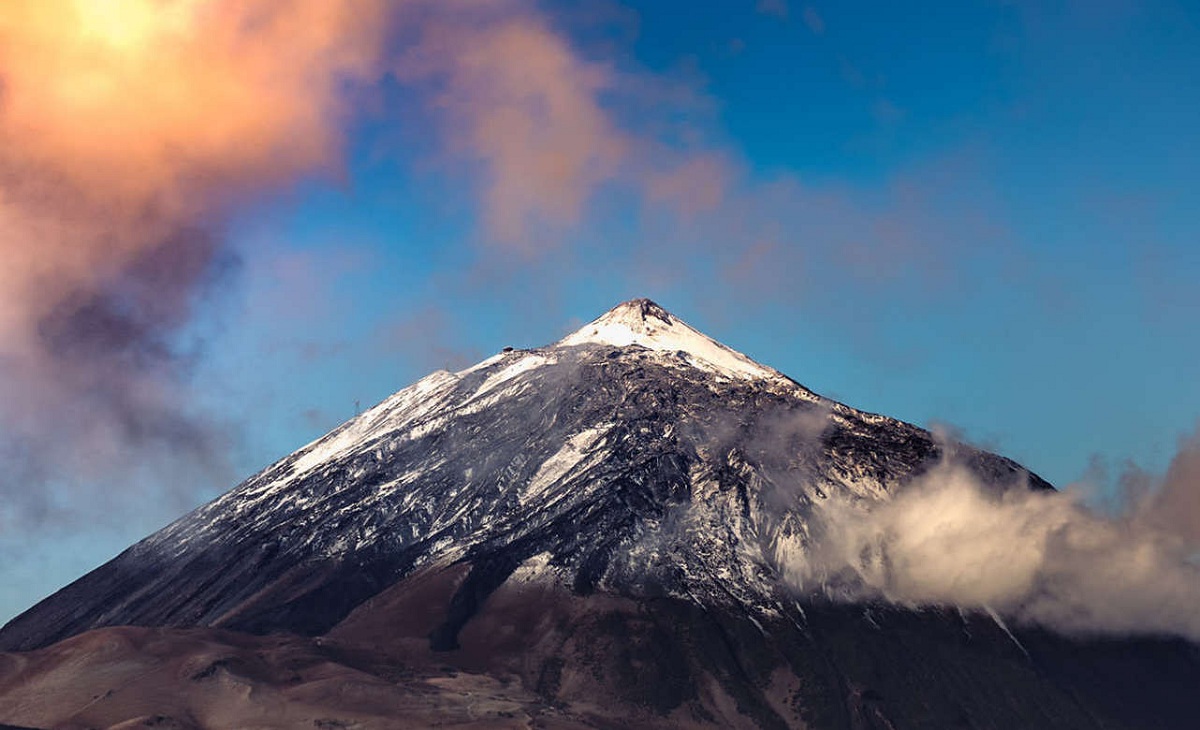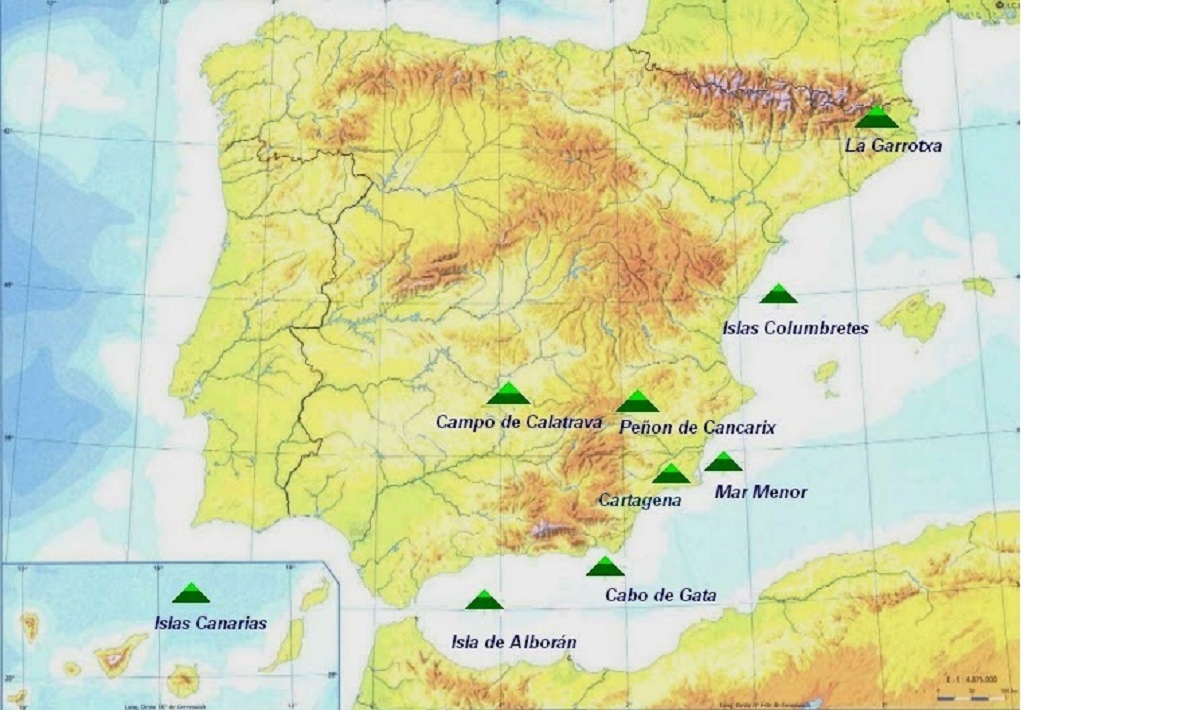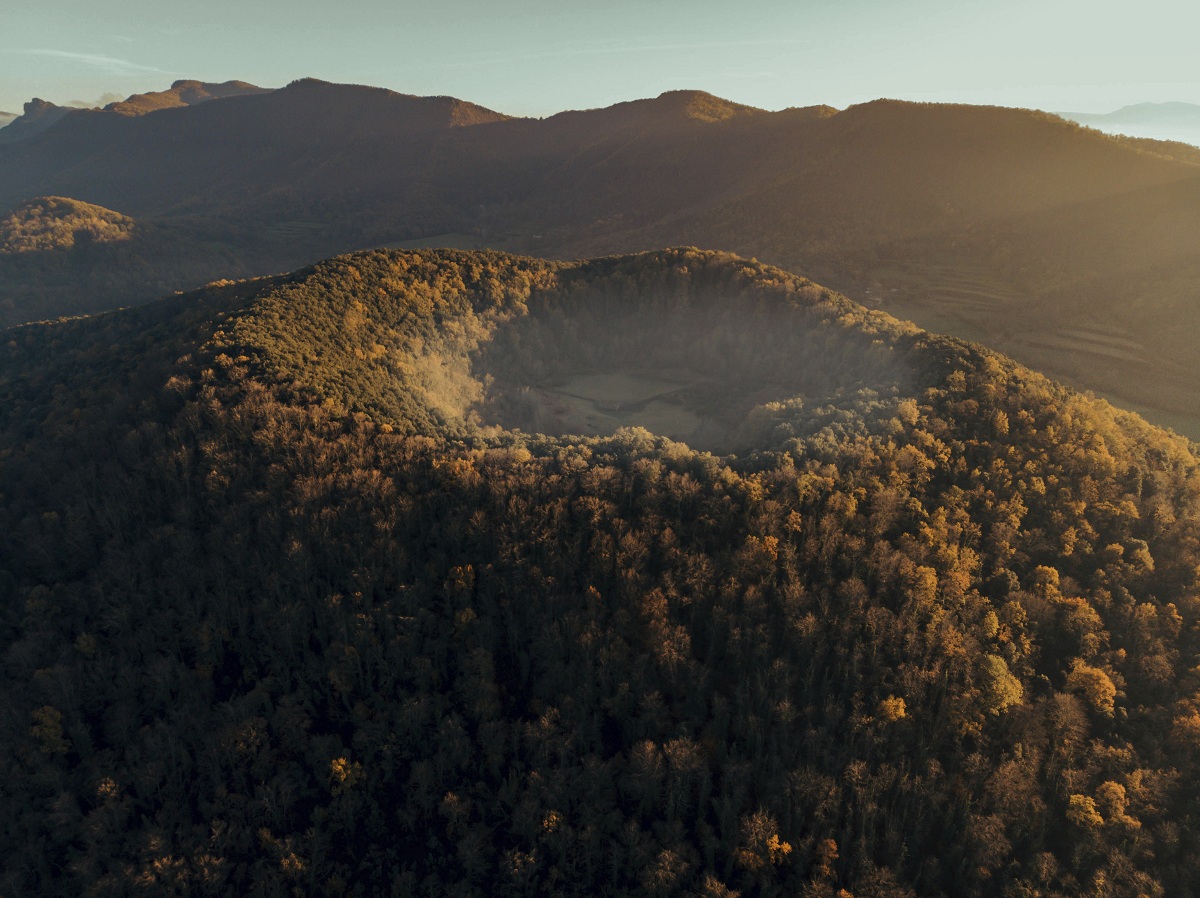
There are numerous volcanoes in Spain, although the vast majority of them are found in the Canary Islands. What many people do not know is that there are volcanoes in Catalonia, in Castilla la Mancha and Ciudad Real. It has some special characteristics and they are asleep for now. There are numerous types of volcanoes in Spain and we are going to see what their characteristics are.
In this article we are going to tell you everything you need to know about the different volcanoes in Spain and what their main characteristics are.
Volcanoes in Spain
El Teide in Tenerife
At 3.715 meters above sea level, it is undoubtedly the highest peak in Spain and the third highest volcano in the world. Located in Tenerife (Canary Islands), it is visited by 3 million people every year. Its formation began 170.000 years ago and the last eruption occurred in 1798.
The Teneguía in La Palma
On October 27, 1971, the Spanish volcano erupted for the penultimate time and returned to calm on November 28. After several days of very significant seismic movement, the last eruption was recorded yesterday. Teneguía is located on the island of La Palma, less than 1.000 meters above sea level. There is no vegetation around.
Tagoro, El Hierro
In the town of La Restinga (El Hierro), an underwater volcano erupted in October 2011 and continued until March 2012. Five years later, scientists monitored the volcano because they feared it could come back to life with greater force.
Cerro Gordo, Ciudad Real
The Cerro Gordo volcano is located between Granátula and Valenzuela de Calatrava (Ciudad Real). It is currently a museum and has been open to the public since 2016. During the visit, you will learn how it was formed and can see the landscape of the entire area. It is 831 meters high. The Campo Calatrava volcano is an interior plate volcanic activity related to the ascent of the Betic Mountains and the displacement of the Eurasian and African plates. It began with the eruption of the Morrón de Villamayor de Calatrava volcano 8,5 million years ago. Its last eruption occurred at the Columba volcano 5500 years ago.
La Arzollosa, Piedrabuena (Ciudad Real)
It can be between eight and a million years old and is part of what was previously called the "central volcanic area." Piedrabuena, related to the fissures (La Chaparra, Colada de La Cruz and La Arzollosa) that caused important volcanic events. The volcanic cone is 100 m high and consists mainly of molten slag. The crater opens to the southwest, in fact, in terms of its fracture characteristics, the highlight of this volcano is the eruption that built it and formed the most important Pajojo flow field in the Iberian Peninsula.
San Juanma, La Palma
It is located in the Las Manchas neighborhood of El Paso, Santa Cruz de Tenerife, La Palma. It erupted on June 24, 1949, destroying fields and houses after the lava passed. The result of this eruption is the Cueva de las Palomas, recently renamed the Todoque volcanic tube. Its scientific interest is of great geological importance and its biological importance has increased due to its special invertebrate fauna.
Enmedio, an underwater volcano between Tenerife and Gran Canaria
It is a giant with a diameter of almost three kilometers at the bottom, and there is currently no eruptive activity. At 500 meters southwest of the main building of the Enmedio volcano, there are two secondary cones, whose height does not exceed 100 meters from the seabed. The existence of this volcano was accurately detected by the German oceanographic ship Meteor in the late 1980s, although it was first drawn by the IEO ship Hespérides in the late 1990s. The steep slopes of this volcano are very prominent, converging only near the bottom of the volcano.
It should also be noted that only one of the two cones of about 100 meters high that are next to the Enmedio volcano, separated by a depression, is known. The Enmedio volcano is closer to Tenerife than to Gran Canaria. Specific, It is located approximately 25 kilometers from the Abona lighthouse and 36 kilometers from the port of La Aldea de San Nicolás de Tolentino.
Pico Viejo, Tenerife Island
Pico viejo (3.100 meters) is a volcano located in Tenerife that, together with Mount Teide, They are the only two mountains in the Canary Islands with an altitude of more than 3.000 meters. It has a crater 800 meters in diameter and a maximum depth of 225 meters, it was once an impressive lake of lava. In the Middle Ages (1798), Pico Viejo began to act, triggering one of Tenerife's historic eruptions, which occurred within the park. It expelled volcanic material in three months, forming nine vents, causing the black material to spill throughout the southern part of the Caldera de Las Cañadas. This series of carefully arranged craters is called Narices del Teide. It is part of the natural landscape of the Teide National Park and is also known by the name of Montania Cha Hora.
It is also a protected natural space and belongs to the natural monument that contains the Teide-Pico Viejo group of volcanoes. Its formation began about 200.000 years ago in the center of the island. It should be noted that magma is easy to climb on the island right now, and because this crater is considered one of the most interesting craters in the Canary Islands, due to its different shapes they are the product of its evolution.
Los Ajaches, Lanzarote
Los Ajaches is a large volcanic formation that occupies the southern part of the Island. There is a plot in the leeward area and a rocky plain on the windward side. This important area of archaeological heritage is located in the city of Yaiza, where we find caves, carvings and vestiges of ancient pastures. The area is the oldest part of the island and is still severely damaged by erosion, the ravines that this natural route has traversed in the last ten million years. Los Ajaches is located in the Timanfaya National Park. The Los Ajaches plot extends from Punta del Papagayo at the southernmost point to Playa Quemda in the center. They are the remains of a volcano from 15 million years ago. Ocean erosion has eroded most of the 600-meter-thick parcel of land. The last eruption was 3 million years ago.
Alto de la Guajara, Tenerife Island
At 2.717 meters above sea level, it is the third highest volcano in the Canary Islands. It was formed 3 million years ago. The Teide National Park is a complement to the Hawaii Volcanoes National Park; This is mainly due to the fact that each one of them represents this type of island (Hawaii) and the more evolved and differentiated structure (Ted) of magma and less evolved volcanic form. From a landscape perspective, Teide National Park has similar characteristics to the Grand Canyon National Park (Arizona, USA).
Santa Margarida, Girona
In the town of Olot in Girona, we discovered the Santa Margarida Volcano. By appearance, it has little to do with the previous one. The most striking thing is that there is a recoil inside the crater.
Croscat, Girona
In the region of La Garrocha is this Strombolian volcano. Specifically, it is located in the Garrotxa Volcanic Belt Natural Park, where there are 40 volcanic cones and 20 lava flows. It is considered the youngest, but it has been dormant since the last eruption was 11.500 years ago.
I hope that with this information you can learn more about volcanoes in Spain and their characteristics.


